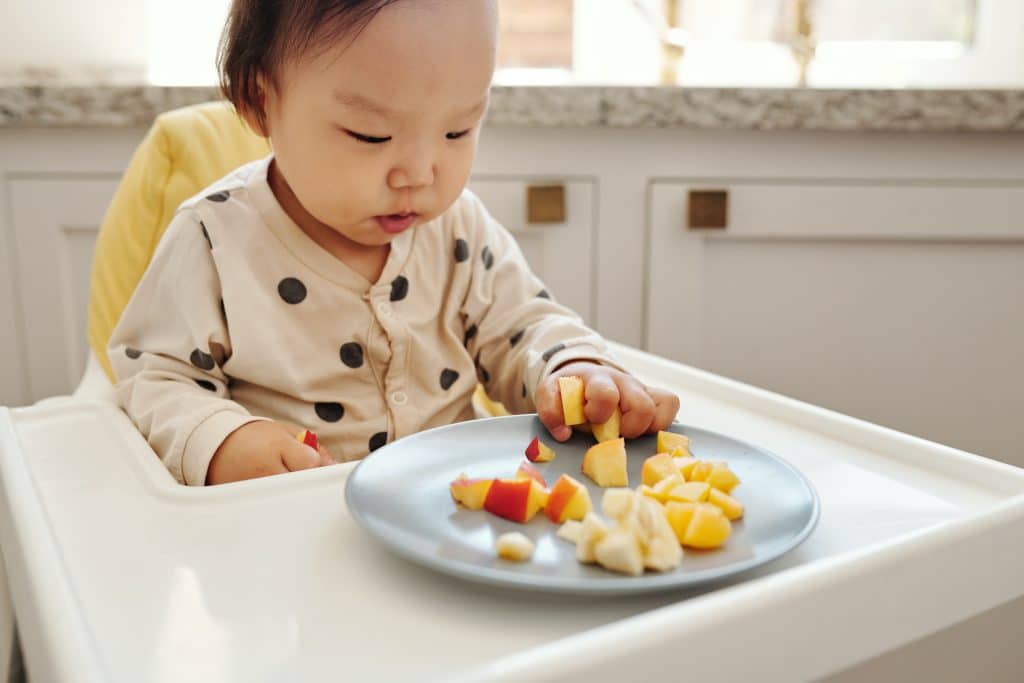As parents, we know the struggle of trying to persuade a stubborn child to take just one bite of that broccoli or spinach. It can be incredibly frustrating, right? But don’t worry, you’re not alone. In different studies, as many as 50% of children have picky eating habits! In this blog, we’ll explore the importance of a balanced diet for your toddler’s growth and development, and offer practical tips to tackle your child’s pickiness and promote healthy eating habits.
Table of Contents
Why Toddlers Resist New Foods
Understanding the reasons behind your picky toddler’s eating habits is the first step towards finding solutions. In this table, we’ve summarized the key factors that contribute to picky eating. From neophobia, the fear of new foods, to natural taste preferences and texture sensitivities, these insights shed light on why your little one may be hesitant to try new things. Additionally, we explore the influence of parental behaviors on a child’s eating habits. By recognizing these factors, we can better navigate the challenges and work towards helping our picky eaters develop a more varied and balanced diet. Take a look at the table below for a concise breakdown of these important insights.
| Why is my child picky? |
|---|
| Neophobia: A fear of new things, including foods, which is an innate instinct. |
| Natural taste preferences: Toddlers have a preference for sweet and salty tastes due to their evolutionary significance. |
| Texture sensitivity: Some children are sensitive to certain textures, which can affect their food preferences. |
| Parental influence: Our eating habits and limited food variety can impact our child’s eating behavior. |
How to Introduce New Foods to Toddlers
The key to introducing new foods to your child is gradual exposure. Research suggests that it can take between 15-20 experiences with a new food before a child accepts it. Patience and persistence are essential. So, how can we gently expose our children to new foods without overwhelming them or creating a negative experience?
Pairing new foods with familiar ones can make them more acceptable to your child. Consistent mealtime routines can also create a sense of familiarity and security, making your child more open to trying new things. How can we incorporate new foods into our child’s regular meals without causing too much disruption?

One way to get your picky toddler interested in eating new foods is by making the experience fun and engaging. Creative food presentation and involving your child in meal preparation can pique their interest and make them more willing to try new things.
How to Reduce Toddler Pickiness Over Time
Creating a calm and enjoyable mealtime atmosphere is crucial for encouraging your child to try new foods. Minimize distractions like TV or mobile devices during mealtimes, and make it a point to eat together as a family. After all, family mealtimes foster connection and allow your child to observe everyone trying different foods. How can we make our mealtimes a more positive experience for everyone?
SPONSORED BY: Goally
Goally’s Kid’s Tablet has one of the largest libraries of skill-building videos (like “How to Share” and “What To Do When You’re Lost”) in the Goal Mine app.👇
Promoting independence in eating can also help reduce pickiness. Provide age-appropriate utensils, like child-sized forks and spoons, and encourage your child to serve themselves. This can make them feel more in control and more likely to try new foods.
Tips for Parents to Help Their Kids Eat New Foods
- Be a Role Model – Kids are more likely to try new foods if they see their parents enjoying them. Demonstrating healthy eating habits and showing enthusiasm for trying new foods can go a long way in encouraging your child to do the same.
- Involving Children in Meal Preparation – Including your child in meal preparation can make them more invested in the foods they’re eating. Start by taking them grocery shopping and allowing them to pick out a new fruit or vegetable to try. Then, involve them in the cooking and serving process. By giving them a sense of ownership over their meals, they may be more willing to try new foods.
- Offering Variety and Balance – Introducing a wide variety of foods from different food groups and exploring different flavors and textures can help your child become more open to trying new things. Aim to provide balanced meals that include fruits, vegetables, proteins, grains, and dairy.
- Reinforcing Positive Behavior – When your child tries a new food or shows willingness to eat something different, be sure to praise and encourage them. Positive reinforcement can motivate them. Learning how to get a picky toddler to eat can be a lot of trial and error, but a little encouragement can go a long way. However, avoid using negative reinforcement, such as punishment or threats, as this can create a negative association with food.

Read More: 10 Tips to Help a Picky Eater
Tips to Help Picky Toddlers Eat New Foods Themselves
- Encourage Autonomy and Decision-Making – Fostering a sense of autonomy and decision-making in your child can be incredibly helpful in getting them to try new foods. Let them choose a new food to try at the grocery store or involve them in menu planning for the week. By giving them some control over their meals, they may be more open to experimenting with new flavors.
- Using Peer Influence – Peer influence can be a powerful tool when it comes to encouraging children to try new foods. Arrange playdates with friends and include meal or snack times where children can share their food. Exposing your child to other children’s eating habits can spark curiosity and make them more willing to try something new.
- Fun and Educational Food Activities – Engaging in fun and educational food-related activities can help pique your child’s interest in new foods. Try gardening and cooking projects together, or explore food-themed games and books that teach them about different foods, flavors, and cultures. By making food fun and educational, your child may become more excited about trying new things.
- Setting Achievable Goals – When it comes to trying new foods, it’s essential to set achievable goals for your child. Focus on small steps and gradual progress rather than expecting them to love every new food they try. Be sure to acknowledge and celebrate their achievements, no matter how small. This can help build their confidence and motivation to continue exploring new foods. How can we set realistic expectations and celebrate our child’s progress in trying new foods?
Goally | Apps That Build Behavior & Life Skills for Kids
Want to keep your child motivated while they try out new foods? Goally’s skill-building tablet & suite of therapy apps are designed to celebrate small wins and help your child grow.
Our Rewards app gives kids points for completing daily routines and following “The Rules” on Goally. These points can be redeemed for exciting rewards or time in Goally’s game center. It’s a fun way to reinforce positive behavior and keep them motivated to learn new skills!
Our Behavior Tracker helps you reward your kiddo for specific skills, like “being kind” or “flushing the toilet.”
By setting clear expectations and rewarding their efforts, you foster a positive environment for your child to flourish in their behavioral skills journey.

Give Goally a try on any android, iOS, or Amazon device for as low as $15. Or, choose our distraction-free device (which ONLY has Goally on it) for $149 if you don’t want your kiddo sneaking onto Youtube every few minutes… 😉
Conclusion
In this blog, we’ve covered a variety of strategies to help your picky toddler eat new foods, from understanding the reasons behind their pickiness to creating a positive mealtime environment and involving them in meal planning. Remember, being patient and consistent is key when it comes to helping your child develop healthy eating habits. By remaining supportive and persistent, you can help your child discover the joys of trying new foods and pave the way for a lifetime of healthy eating. After all, a balanced diet is essential for your child’s growth and development. Happy eating!
This post was originally published on 03/28/2023. It was updated on 06/05/2023.

Goally
We help parents teach their kids life skills, like doing bedtime and morning independently. Backed by science, we incorporate evidence-based practices and expert-informed designs in all of our apps and content.







